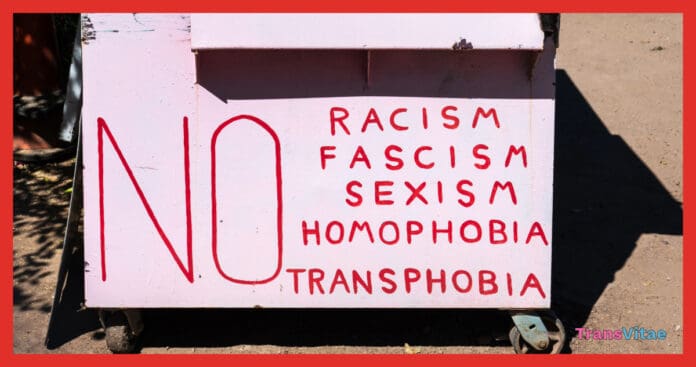In recent years, schools across the United States have witnessed a concerning rise in hate crime incidents targeting LGBTQ students. These incidents, fueled by prejudice and discrimination, have raised alarm bells among educators, parents, and advocacy groups.
The U.S. Department of Education recently released a comprehensive report that found that during the previous academic year, there were 23% more incidents of hate crimes against LGBTQ students. The report analyzed data from K-12 schools nationwide and highlighted disturbing patterns. These incidents range from verbal harassment and cyberbullying to physical assaults and property damage.
Targeted Harassment
LGBTQ students often face targeted harassment based on their sexual orientation, gender identity, or expression. The report reveals that transgender and non-binary students are particularly vulnerable. They experience higher rates of bullying, exclusion, and violence. This hostile environment seriously impacts their mental health, academic performance, and overall well-being.
Challenges Faced by Schools
Educators and administrators grapple with the challenge of creating safe and inclusive environments for all students. While many schools have implemented anti-bullying programs and LGBTQ awareness training, there’s still a long way to go. Schools often face these difficulties:
- Lack of comprehensive policies: Some schools lack specific policies addressing hate crimes and discrimination against LGBTQ students.
- Inadequate training: Teachers and staff may not be fully equipped to identify and address instances of LGBTQ-based harassment and violence.
- Social stigma and fear: LGBTQ students may fear reporting incidents due to shame, social stigma, or a belief that nothing will be done.
The devastating impact of LGBTQ hate crimes has a profound negative impact on students, schools, and communities.
- Mental and emotional health: Victims experience increased anxiety, depression, and even thoughts of suicide.
- Academic decline: Harassment can disrupt focus, attendance, and overall academic success.
- School climate: A culture of intolerance creates a fearful environment for all students.
- Community wellbeing: Unchecked hate crimes threaten social cohesion and respect for diversity.
Steps towards Solutions
Addressing this complex issue requires a multi-faceted approach.
- Robust policies: Schools need clear policies prohibiting discrimination and providing specific protections for LGBTQ students.
- Staff Training: Educators and staff must receive extensive training about LGBTQ identities, identifying bias, and effective allyship.
- Peer Support Programs: Establishing student-led LGBTQ support groups and clubs can create safe spaces and foster peer understanding.
- Reporting Systems: Schools must provide accessible, confidential avenues for students to report incidents of harassment.
- Community Partnerships: Collaboration with LGBTQ organizations and mental health professionals is vital for supporting targeted students.
The Role of Advocacy Organizations
Organizations like GLSEN and The Trevor Project play a pivotal role in:
- Data Collection: Their research provides essential insights into the scale and nature of LGBTQ-based hate crimes in schools.
- Support Resources: They offer crisis intervention, counseling, and resources for students, educators, and families.
- Policy Advocacy: These organizations tirelessly advocate for policy changes that will ensure the safety and well-being of LGBTQ students.
Creating Inclusive Futures
Every student deserves the right to learn and thrive in a safe, supportive school environment. Combating hate crimes against LGBTQ students demands a commitment from educators, policymakers, community leaders, and all of us. By working together, we can build schools where every student is valued, respected, and free to reach their full potential.
Let’s all help make schools truly safe and inclusive for the LGBTQ+ community.


